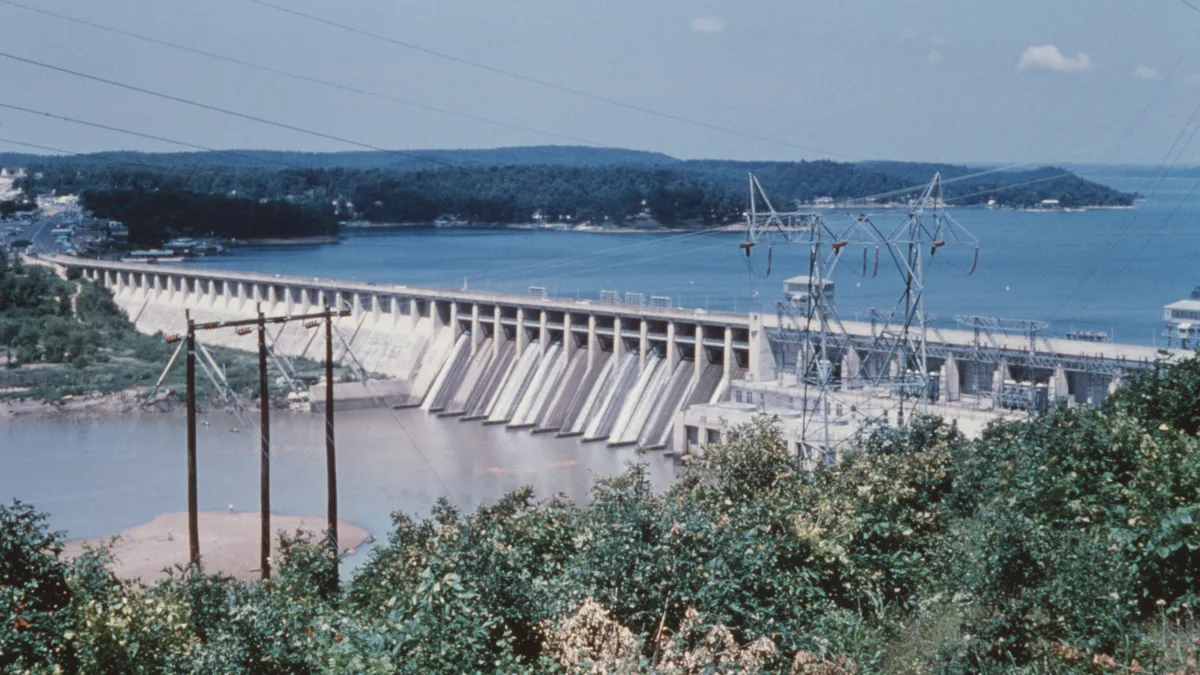Dive Brief:
- Hydropower is integral to ensuring the stability of the Western Interconnection in cases of sudden and large losses of generation, according to a new study led by the Pacific Northwest National Laboratory.
- The study found that hydropower facilities contributed between 30% to 60% of governor response to stabilize system frequency after outages, despite constituting between 20% and 25% of generation capacity in the Western Interconnection.
- At the same time, hydropower generation is also contingent on a particular year's precipitation and snowpack, and experts say it's possible that warmer winters could increase the amount of water in the system in the winter, thereby decreasing the amount left during the summer months.
Dive Insight:
Hydropower facilities can be an important part of responding to extreme grid events, as they are able to quickly change their power outputs as well as provide voltage support, inertia response and primary frequency response, the report noted. Hydropower also constitutes the largest portion of long-duration energy storage on the grid, providing support during prolonged outages.
Despite this, the study's authors noted, there aren't yet standard practices to quantify the contributions of hydropower resources. And with the broader transition of the energy system to newer resources, as well as the way in which reliability and resilience are assessed, developing a better understanding of how hydropower supports the grid will help to better value the resource, as well as make the case for future investments in hydropower facilities as a way to boost reliability, they said.
The new study outlines a framework to do just that. It divides the contributions that hydropower makes to grid resilience into two categories of events: a sudden loss of large generation assets, ranging from minutes to hours in time span, as well as load changes due to extreme weather, like heatwaves and cold snaps. While the latter does not always lead to outages with power grid equipment, extreme weather can decrease energy production, especially from renewable sources of energy, according to the study.
Historical data and simulation results both indicate that hydropower is a major resource for inertial and governor responses in the Western Interconnect during extreme weather conditions, the study found.
Moreover, the resource is also critical to reliability during extreme weather due to its ability to store energy and its dispatch flexibility.
"Simulation results from extreme weather scenarios for the western United States showed significantly depressed wind and solar generation even though the impact on system load was not extreme. It was observed that hourly flexibility of hydropower resources was used to fill the resulting energy and capacity gaps," the report noted.
Ben Kujala, director of power planning with Northwest Power and Conservation Council, said in an email that the study is consistent with his own understanding that hydropower projects provide substantial response following disturbances on the grid. At the same time, regional analysis in the Pacific Northwest indicated that there will be impacts on hydropower generation from climate change.
"It is definitely important for [policmakers] and power planners to be thinking about the impact of climate change on hydropower generation," Kujala said.
"That being said, the hydropower system is a substantial part of our system and it will definitely play a role in responding to any extreme weather event in our region. Every year has different water, so our job is to understand the potential limits to that response under stressful conditions," he added.















